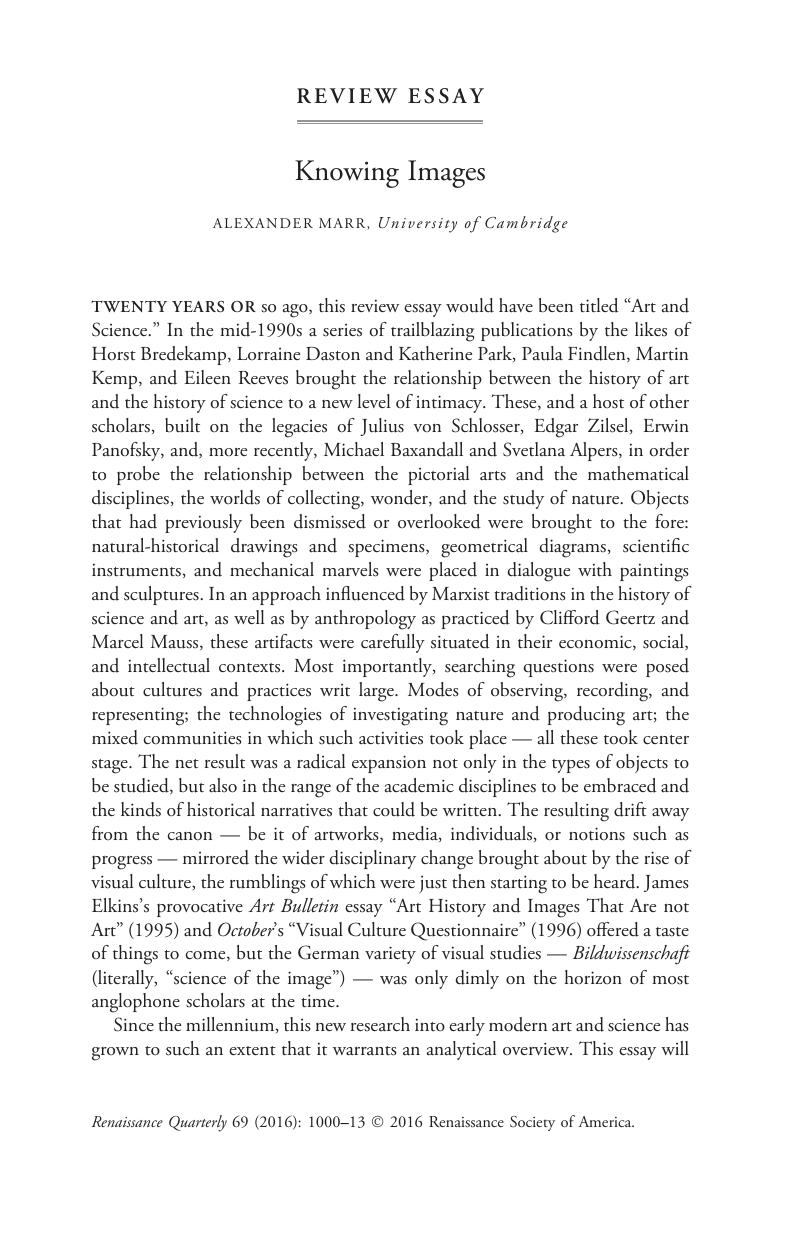Crossref Citations
This article has been cited by the following publications. This list is generated based on data provided by Crossref.
Jardine, Boris
2017.
State of the field: Paper tools.
Studies in History and Philosophy of Science Part A,
Vol. 64,
Issue. ,
p.
53.
Porter, Dahlia
2018.
Epistemic Images and Vital Nature: Darwin’sBotanic Gardenas Image Text Book.
European Romantic Review,
Vol. 29,
Issue. 3,
p.
295.
Stejskal, Jakub
2018.
The Substitution Principle Revisited.
Source: Notes in the History of Art,
Vol. 37,
Issue. 3,
p.
150.
STEJSKAL, JAKUB
2019.
Substitution by Image: The Very Idea.
The Journal of Aesthetics and Art Criticism,
Vol. 77,
Issue. 1,
p.
55.
Kusukawa, Sachiko
2019.
The Early Royal Society and Visual Culture.
Perspectives on Science,
Vol. 27,
Issue. 3,
p.
350.
Dumas Primbault, Simon
2020.
Encyclopedia of Early Modern Philosophy and the Sciences.
p.
1.
Măgureanu, Ioana
2020.
Encyclopedia of Early Modern Philosophy and the Sciences.
p.
1.
Hendriksen, Marieke M. A.
2020.
Encyclopedia of Early Modern Philosophy and the Sciences.
p.
1.
Hendriksen, Marieke M. A.
2022.
Encyclopedia of Early Modern Philosophy and the Sciences.
p.
2063.
Dumas Primbault, Simon
2022.
Encyclopedia of Early Modern Philosophy and the Sciences.
p.
605.
Măgureanu, Ioana
2022.
Encyclopedia of Early Modern Philosophy and the Sciences.
p.
906.
Alberts, Tara
Fransen, Sietske
and
Leong, Elaine
2022.
Translating Medicine, ca. 800–1900.
Osiris,
Vol. 37,
Issue. ,
p.
1.
Büttner, Jochen
Martinetz, Julius
El-Hajj, Hassan
and
Valleriani, Matteo
2022.
CorDeep and the Sacrobosco Dataset: Detection of Visual Elements in Historical Documents.
Journal of Imaging,
Vol. 8,
Issue. 10,
p.
285.
Sander, Christoph
2022.
Rendering Magnetism Visible: Diagrams and Experiments Between 1300 and 1700.
Centaurus,
Vol. 64,
Issue. 2,
p.
315.
Marshall, Guy Clarke
2024.
Diagrammatic Representation and Inference.
Vol. 14981,
Issue. ,
p.
421.
Pineda de Ávila, Nydia
2025.
Universal enough: the politics of nomenclature in seventeenth-century selenography.
The British Journal for the History of Science,
p.
1.



